Revista Electrónica de Investigación Educativa
Vol. 4, No. 1, 2002
Opening the University to Virtual Training Spaces:
A Challenge to Student Autonomy
Thierry Karsenti
thierry.karsenti@umontreal.ca
Faculté d éducation, Département de psychopédagogie
Université de Montréal
C.P. 6128, succ. Centre-Ville
Montréal, Qc, H3C 3J7, Canadá
François Larose
flarose@courrier.usherb.ca
Université de Sherbrooke
2500, boulevard de l'Université Sherbrooke
Québec, J1K 2R1, Canadá
Mauricio Núñez
bpnr@hotmail.com
Université Laval
Pavillon Moraud, Ch.1403, Université Laval, Ste-Foy
Québec, G1K 7P4, Canadá
(Received: September 8, 2001;
accepted for publishing: January 16, 2002)
Abstract
The objective of this article is to present the achievements and problems experienced by a group of 140 pedagogy students through the implementation of a course given on the Internet. The data comes from the analysis (of the content) of interviews conducted with several students, as well as of the electronic messages received (n=1614) and of the transcripts of conversations (on line) in real time (chat). The results awaken our interest as they reflect the importance of rigorous pedagogical management, that is, of courses which take into account the specific educational criteria in their production, and particularly in relation to courses taught using the Internet. The results of this analyses will facilitate the choice of more efficient ways of designing virtual courses. We hope that what we have found through this experience may inspire teachers in such production, and that it may contribute to stimulating reflection on the problems which must be avoided from a critical point of view.
Key words: Online learning, autonomy, technology.
Introduction
Over the past fifty years many changes have troubled society: the advent of television, video and a series of electronic games, as well as new information and communication technologies. These innovations, added to the metamorphosis of family traditions and social values, were not without their particular impact on students, who grew up in an environment of significant technological changes that affected, each in its time, the communication structures within the family and society. Thus, the younger generation, unlike their predecessors, have new expectations and needs manifested within various learning environments, including that of the university (Karsenti and Larose, 2001).
With the desire to meet the new challenges faced by university teachers, particularly in regard to motivation and development of technological media integrated into learning environments and into learning, increasingly rich and stimulating, the University of Quebec (Canada) decided to develop and test an Internet course, which was offered to three groups of students. We have confirmed that, in the name of progress, more and more online university courses are proposed to students. Consequently, the following questions arise: Can someone really learn online? Are there any courses whose content is more suited to a virtual environment? Could it be that there are courses that should not be taught through the Internet? In order to answer these questions the management and implementation of that course was the subject of a thorough investigation, which led the study of, among other things, problems and achievements experienced by students dealing with these online courses. This latter aspect will be, in the following pages, the focal point of our attention.
This article aims, based on the presentation of an experience, to open debate on the advantages and disadvantages offered by virtual university training as a non-traditional academic route. To achieve this effect, we must improve our understanding of the problems inherent in a course taught on line. This we propose to do through the analysis of the difficulties encountered, and the successes evidenced by the students themselves, transferred now from the traditional classroom to the virtual one.
The creation of an Internet course: between rigorous pedagogy and the art of teaching
The course Introduction to Educational Research (Figure 1), took into account the numerous recommendations of the survey of Boshier et al. (1997). These researchers conducted an exhaustive study on the quality of courses given by Internet, analyzing a total of 127 courses, based on a framework of codes, and containing 43 different screening criteria. In their conclusions the authors state clearly that not all Internet courses offered, succeed in arousing students’ interest. Their results suggest, among other things, that “there are super-boring courses, which are nothing more than an electronic transposition of slides presented via Internet” (p. 37). At the other extreme, there are “[...] courses crammed with hyperlinks, animations, frills and trimmings that would put Liberace himself in the shade” (p. 37). Moreover, the authors stress that the “virtual” courses are often created without any pedagogical foundation. Evidence shows that, unfortunately and generally, greater use is made of the attraction of the new and modern, than of specific training objectives (Marton, 1999).
At the university where this research was performed, it was considered necessary to develop a course that was captivating and stimulating, with technological applications that would respond to the growing demands of the system’s students, without thereby causing the medium of instruction to override the message. On the other hand, it was equally important to evaluate the successes and the difficulties encountered by students throughout the course, so that the experience would allow us to improve it, and thereby contribute to educational progress and innovation.
With these objectives defined (developing an online course and assessing its impact), the teacher in charge fulfilled the dual role of trainer and researcher, carefully documenting each stage of the course in progress.
Summary presentation of the results of the experiment
1. The method
The data presented below derive, in part, from an analysis of the content of 16 semi-structured interviews and three group interviews (focus group) conducted with students enrolled in the course Introduction to Educational Research. The course was made up of a total of 82 women and 52 men enrolled in three different groups. All were pedagogy students in the second or third year of training, and averaging 21 years of age. The interviews were conducted with a randomly-chosen sample. They were done by research assistants trained in qualitative methods toward the end of the Fall 2000 session, the academic period in which the above-mentioned course had been given.
Work with focus groups had one variation. First, we proceeded to give an open call (via email) to students enrolled in the course, and who wanted to participate freely in the encounters, all in virtual mode. The encounters were held each week (on Wednesday evening, online and from home) for a period of six consecutive weeks, after which we continued with a meeting every two weeks. The coordinator of the sessions was the course teacher herself, who organized each “encounter” based on the themes addressed in the context of the course.
The data also arise from the analysis of 1,614 Electronic messages received from the three groups of students who participated in the study, as well as the transcription of electronic conversations (chat), in the synchronous mode. This analysis reveals, among other things, two major problems experienced by students. We will present these problems below, together with an important advantage: the possible increase of students’ positive attitudes and their motivation to learn.
2. The problems
Both the analysis of transcriptions of conversations conducted in the form of chat, and the electronic messages received, highlighted the negative impact of a virtual course, though momentary, on student motivation. In fact, although students’ motivation increased towards the end of the course, it was not that way in the beginning, thus demonstrating the need for a large initial effort on students’ part to become acclimated to a virtual environment and its pedagogical particularities. The decline in motivation appeared to be the result, in great part, of the “technological newness”. At least that was we assumed—which in itself was curious if we considered the fact that this was the first experience these students had had with a virtual course.
Nevertheless, a more detailed analysis of available textual material reveals two major problems students experienced: certainly the problem of their personal technical deficiencies; but more than anything else, the problem of a clear lack of autonomy.
While it is easy to presume that the technology was the main obstacle encountered by students enrolled in the course, the results of our analysis clearly show that this was not the case: the difficulties connected with information technology and communication were of least importance. The biggest problem experienced by students seemed to be their own lack of autonomy—the difficulty they had in managing their own learning. As Lamontagne emphasizes (1999), students had difficulty in “relearning how to learn.” This finding was particularly evident after four weeks of courses, when the learning environment had become more familiar, and everyone could already navigate the course site with ease.
For some students, the autonomy granted to them in the beginning seemed difficult to administer, most notably during the first weeks when they thought that, lacking strict rules, regular schedules and classrooms where they had to present themselves periodically, “the work could be done at the last minute” (excerpt from an student’s Email). Thereafter, the students themselves said they were not “accustomed to learning by themselves” (excerpt from an student’s Email), or perhaps they were not ready to learn in a course where “you have to become the one that imposes discipline when a student (me) does not work [...]” (excerpt from an interview with a student), or even that having “suddenly so much autonomy, requires much discipline, and at first I was not ready “ (excerpt from an interview with a student).
A detailed chronological analysis of electronic messages received (n = 1.614), clearly demonstrates the nature of the difficulties encountered by students at the beginning of the course. The angle of the temporal analysis is probably the most revealing of the difficulties experienced by students.
Analysis of Electronic messages received
A general categorization of the electronic messages received allows us to classify them into four groups: messages relating to content and course structure, messages that highlight problems (called “obstacles” in the graphs), work turned in (all work had to be sent via Internet) and various messages (no direct connection with the course). The distribution of the 1,614 electronic messages received is illustrated in Figure 2.
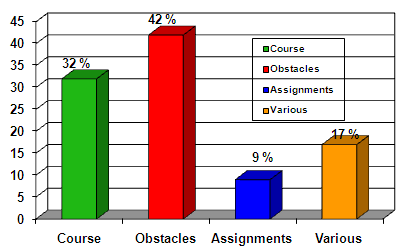
Figure 2. Graph of the percentage distribution of the different
Electronic messages received (n = 1614)
While it is normal for students to run into trouble when they take a course, it is necessary to pursue a better understanding of such problems in order to limit them in the future. A more detailed chronological analysis of the “obstacle messages” seems to allow a better understanding.
We have used grounded (or rooted) theory to analyze the “obstacle messages” of students. Grounded theory, favored by our research approach, assumes that any theory drawn from collected data is rooted in a context, within the natural system studied. According to Corbin and Strauss (1990), theories cannot be directly produced from the data, activities or incidents observed out of context. These are analyzed in their quality of potential indicators of a phenomenon and will be, thereafter, part of a conceptual category. These categories are the foundation of grounded theory. Grounded theory is not produced a priori, to be evaluated later; it does not imply verification or the measure; it is not derived by induction from the phenomena it represents. That is, the grounded theory is discovered, developed and verified at the time of collecting the data and from its systematic analysis. It does not commence with the theory so as to test it; it starts with a field of study or a case and what relates to it, and then the theory emerges (Corbin and Strauss, 1990). Anchored theory seems to be anchored, then, ideal for addressing the new field of research we are trying to understand better. It not only allows the researcher to know the context and the subjects of the case better before emitting a proposal, but it also allows him/her to “anchor” his/her proposals to the system and to the context of the case.
Our analysis of the content of electronic messages allowed us to highlight two categories of problems experienced by students: technical problems and problems related to autonomy itself. The following examples should facilitate the comprehension of what we mean by “problems related to the lack of autonomy.” In each of the examples presented, it is easy to see that the student has lacked autonomy, and that is where the main difficulty lies.
The first Email was received at 23:59 hours, at the end of the third week of classes and on the closing date of the period granted for turning in the first paper concerning the course. The student had sent the teacher, at 19:40 hours, a first electronic message stressing what he did not understand. The teacher, who responded 30 minutes later, had requested details while asking whether the student had read the guide. The last response sent is a good example of the student’s lack of autonomy:
Student: Sir, could you explain? What is it that I have to do? I don’t understand anything!
Teacher: What is it that you don’t understand? You have to start with the module... 1. Do you have the guide?
Student: I haven’t read it because (sic) I don’t understand.
In the second example, a student, the deadline for submitting work now having passed, asks the teacher if there is work to be done during the course. Although a 165-page guide was provided to all students during the first class, although this guide was also available on the website of the course, and despite the existence of a calendar and a clear and precise timetable, the student did not seem to have begun his work even by the fourth week of classes.
Student: Thierry, what do we have to do during the course? Are there assignments to turn in?
The third and fourth examples of electronic messages received during the fourth week of the course, when the date for turning in the first assignment had already passed, also seems to illustrate this lack of student autonomy. In the first case, the teacher is asked if it is necessary to complete the first module, while in the second, a student asks the teacher about the assignments he intends to correct.
Student: Sir, did we have to do the first module?
Student: Sir, what are the modules that you are going to correct, and what do we have to do?
In all, 17% of the students did not deliver the first assignment on time, and many sent messages similar to the ones above. The detailed chronological analysis of the “obstacle messages” will illustrate how this trend evolved.
We have analyzed the “obstacle messages” according to three categories:
- Technical problems;
- Problems related to learner autonomy;
- Other problems;
This analysis will be distributed or divided into four periods which appeared to be crucial for students. The first coincides with the date for turning in the first assignment, the second with the due date for the second assignment, and so on.
1. Analysis of the “obstacle messages” received from the first to the fourth week
During the first four weeks, as illustrated in Figure 3, the proportion of technical problems is relatively high (34%), but remains below the problems related to learner autonomy.
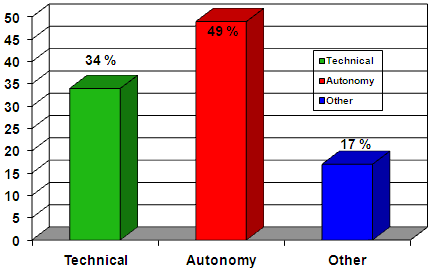
Figure 3. Percentage distribution of different
“obstacle messages” received (Week 1 - 4)
2. Analysis of the “obstacle messages” received from fifth to eighth week
It is interesting to note that the technical problems experienced by students went from 34% during the first four weeks, to 2% over the next four weeks. How to explain this reduction of the importance of the technical problems? It seems important to note that the course over the Internet was, technically, exceptionally simple. All the students needed was the latest version of a browser (Netscape 4.0, Internet Explorer 4.0x). All functions of the course were accessible through these browsers. Technical problems were associated more with the process of the “burden” of programming on the Internet (and its installation), characterizing the latest versions of browsers, such as the use of an electronic messaging server (provided free to all students enrolled in the course). The technical simplicity of course was such that after sending in the first assignment, and after the first meetings in synchronous mode (chat) within the course site, all students could easily manage technically.
Most of the problems encountered seemed to be linked with the lack of autonomy, as illustrated in Figure 4. A certain increase is noted in problems classified as “other”, among which are evident, above all, problems related to finding information in databases.
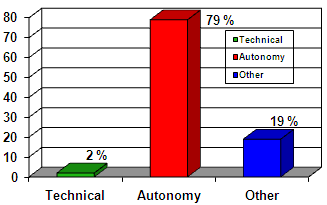
Figure 4. Percentage distribution of the different
“obstacle messages” received (Week 5 - 8)
3. Analysis of the “obstacle messages” received from the ninth to the eleventh week
During the next four weeks, we see a most significant reduction in problems associated with lack of autonomy. All the students enrolled in the online course seemed to found the “rhythm”, and messages such as those exemplified before, became increasingly rare. The students seemed to have been (re)converted into autonomous subjects in their learning process: “[...] at first, I was not accustomed to the discipline. But after a few weeks, I found everything really good. It was the first time in a long time I felt responsible for what I was going to learn [...]. “(Excerpt from an interview with a student). These results are illustrated in Figure 5.
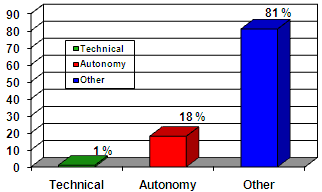
Figure 5. Percentage distribution of different
“obstacle messages” received (Week 9 to 11)
4. Analysis of the “obstacle messages” received in the last four weeks
The analysis of the “obstacle messages” received during the last four weeks of the course suggests that students progressed significantly in terms of autonomy, thanks to the Internet course. Only 3% of the “obstacle messages” are related to the lack of autonomy, as illustrated in Figure 6.
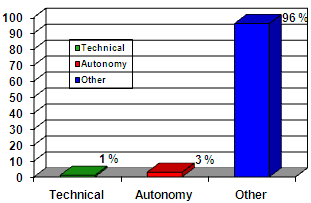
Figure 6. Percentage distribution of different
“obstacle messages” received (Weeks 12 -15)
So as to have a better understanding of Figure 6, It is necessary here to be precise. The problems categorized as “other” (mostly related to difficulties in accessing databases and, in general, seeking information) seem to have a significant share in the analysis of the “obstacle messages”. It is important to emphasize, to this effect, that the number of messages evidencing some kind of difficulty, and received at the beginning of the course, was much higher than the number received at the end. As illustrated in Figure 7, 62% of the “obstacle messages” were received during the first four weeks, while we received only 11% of these messages during the last seven weeks (4% for weeks 9 to 12, and 7% for weeks 13 to 15, respectively). Thus, it should be understood that the actual number of problems classified as “other” (which has come to represent 96% of the “obstacle messages” received in the last weeks of the course) is really unimportant, since the number of messages that show some student difficulty had dropped drastically.
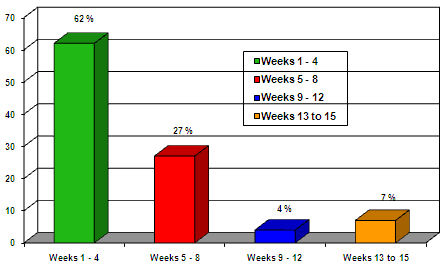
Figure 7. Temporal distribution of the “obstacle messages”
Achievements
Despite these obstacles, the analysis of electronic messages received, and of transcripts of conversations conducted in chat mode, highlight how an online course can help develop students’ motivation for learning.
Transcript analysis of the exchanges in synchronous mode (chat) and electronic messages received, appears to emphasize the cognitive overload caused by a situation demanding autonomy and responsibility at a higher level than usual for students. Not being accustomed to such a demand, their initial reaction, in relation to their attitudes and motivation before this new learning environment, was negative. This result is apparent when particular attention is given to the problems experienced by students.
Indeed, the willingness of students appears much higher at the end than at the beginning of the year, its having been necessary to make an initial effort to acclimate themselves to this new virtual pedagogy. Thanks to this course offered by the Internet, students have been guided to think differently about their relationship with time and space, thereby to appropriate a new way of learning. This seems to have imbued them with greater motivation. Moreover, even if several students were not accustomed to self-administer their learning, there are more who indicated that self-administration as an achievement of the course. Some even said that having a greater responsibility pushed them to work harder, to participate more actively, allowing them to “learn to learn” (student).
[...] at first, I was not accustomed to the discipline. But after some weeks I found all that really good. It was the first time in a long time that I felt responsible for what I was going to learn [...]. (Excerpt from an interview with a student).
[...] I appreciate the course structure. Besides learning the search methods in education and the new technologies (which was not easy, believe me), you learn a work method or strategy. The questions about applications that I found very difficult (I had written a note three weeks ago), and well (sic), turned out not to be so much so. It just happens that usually—I don’t know quite how to say it—you get the impression of being more inflexible. Not that we are not taking this course on the Internet, it's just that we have more autonomy during the course. In other courses, jobs, the answers are more fixed (except for educational projects). Here it is as if it pushes us to learn for ourselves. At first it is not easy, but you end up liking that (and here I’m not speaking just for myself). Finally I think it is very good [...]. (Excerpt from an student’s electronic message).
[...] What was interesting during the course, was that we could work when we wanted to, and at our own pace. [...]. It was like having more freedom. At first, I thought I was not going to work hard and would have an easy course. However, when the team met, we decided to finish the course as quickly as possible. [...], But okay. And then we were all surprised to have worked a lot, and sometimes we had done even more than we were asked, like the collection of data [...] and we have finished almost the entire course in less than two weeks, except for the final project [...]. Having more autonomy has been very good for us. We’ve worked hard, and we've enjoyed it. (Excerpt from an interview with a student).
Conclusion
The integration of information and communication technologies into university pedagogy is a challenge, and the problems that inevitably accompany it should be handled at once, with wit and wisdom. The experience of offering a course on the Internet, held at the University of Quebec, let us note that the virtual courses seem to have a very positive impact on student motivation, but there is still a significant gap between the presential college classes and the virtual classroom. Indeed, our study shows that this gap is not caused by technology alone, as many suspect, but rather appears to be caused by a lack of student autonomy.
Our analysis states the importance of a rigorous pedagogical management of virtual courses, in other words, the need to create online courses that make use of technology to promote learning in the service of pedagogy, and that, with the purpose of increasing the students’ motivation, while helping them become independent in their own learning process. It is therefore imperative to avoid the courses that are only papers presented on the Web (Boshier et al., 1997) or that lack any educational rigor in their educational development (Tardif, 1996).
We must not forget an important element observed through the experience of the Internet course: in the short term, the courses seem to have a negative impact on student motivation, even if in the long term the effect produced is radically different.
Finally, even if the courses offered by the Internet seem to generate greater motivation in students, we must not deceive ourselves into thinking that you just press “enter” to make everything turn out fine. A teacher who would like to teach a course on the Internet, as Lougheed pointed out (1998), must build the “classroom” with all its parts, taking into account elements that in a regular classroom it would be his/her job to check, such as that the door not be locked, that the lights are turned on, that the pages of the manual not address topics having no relationship to the course, that the blackboard be found at the fronts the class and that students are properly accommodated.
The results of this experience of a course taught on the Internet, conducted by the University of Quebec, seem very positive and promising. However, other research studies need to be done in a similar field, with the aim of discerning the advantages and disadvantages of such methods of teaching or learning, both with future teachers and their trainers, teachers of the schools of education
References
Basque, J. & Rocheleau, J. (1996). La technologie éducative en réseau : réseaux technologiques, réseaux humains. Ste-Foy: CIPTE, Télé-université.
Boshier, R., Mohapi, M., Moulton, G., Qayyum, A., Sadownik, L., & Wilson, M. (1997). Best and worst dressed web courses: Strutting into the 21st century in comfort and style. Distance Education, 18 (2), 36-49.
Corbin, A. & Strauss, J. (1990). Basics of qualitative research: grounded theory procedures and techniques. Newbury Park, CA.: Sage Pub.
Gadbois, L. (April, 1989). Des classes spéciales pour élèves motivés: vers la formation d'une nouvelle élite. Prospectives, 67-72.
Karsenti, T. & Larose, F. (2001). Les TIC… au coeur des pédagogies universitaires. Quebec : Presses de l’Université du Québec.
Laferrière, T. (1997). Rechercher l'équilibre au sein des environnements d'apprentissage intégrant les technologies de l'information: Préparer les futurs choix. Toronto: Conseil des ministres de l’Éducation du Canada.
Lamontagne, D. (1999). Enseignement à distance: réapprendre à apprendre. Infobourg, 4 (1), 32-33.
Lougheed, J. (November, 1998). Goodbye, Mr. Silicon Chips. University Affairs, 6-10.
Marton, P. (1999). Les technologies de l’information et de la communication et leur avenir en éducation. Éducation et francophonie, 27 (2). Retrieved January 5, 2001 from: http://www.acelf.ca/c/revue/index.ph
Tardif, J. (April, 1996). Une condition incontournable aux promesses des NTIC en apprentissage: une pédagogie rigoureuse. Paper presented at 14e. Colloque de l’AQUOPS, Quebec.
Electronic references
www.rescol.ca (Canada)
http://www.ascilite.org.au/ (Australia)
http://thot.cursus.edu/ (France)
Translator: Lessie Evona York-Weatherman
UABC Mexicali
Please cite the source as:
Karsenti, T., Larose, F., & Nuñez, M. (2002). Opening the university to virtual training spaces: A challenge to student autonomy. Revista Electrónica de Investigación Educativa, 4 (1). Retrieved month day, year, from: http://redie.ens.uabc.mx/vol4no1/contents-karsenti.html





